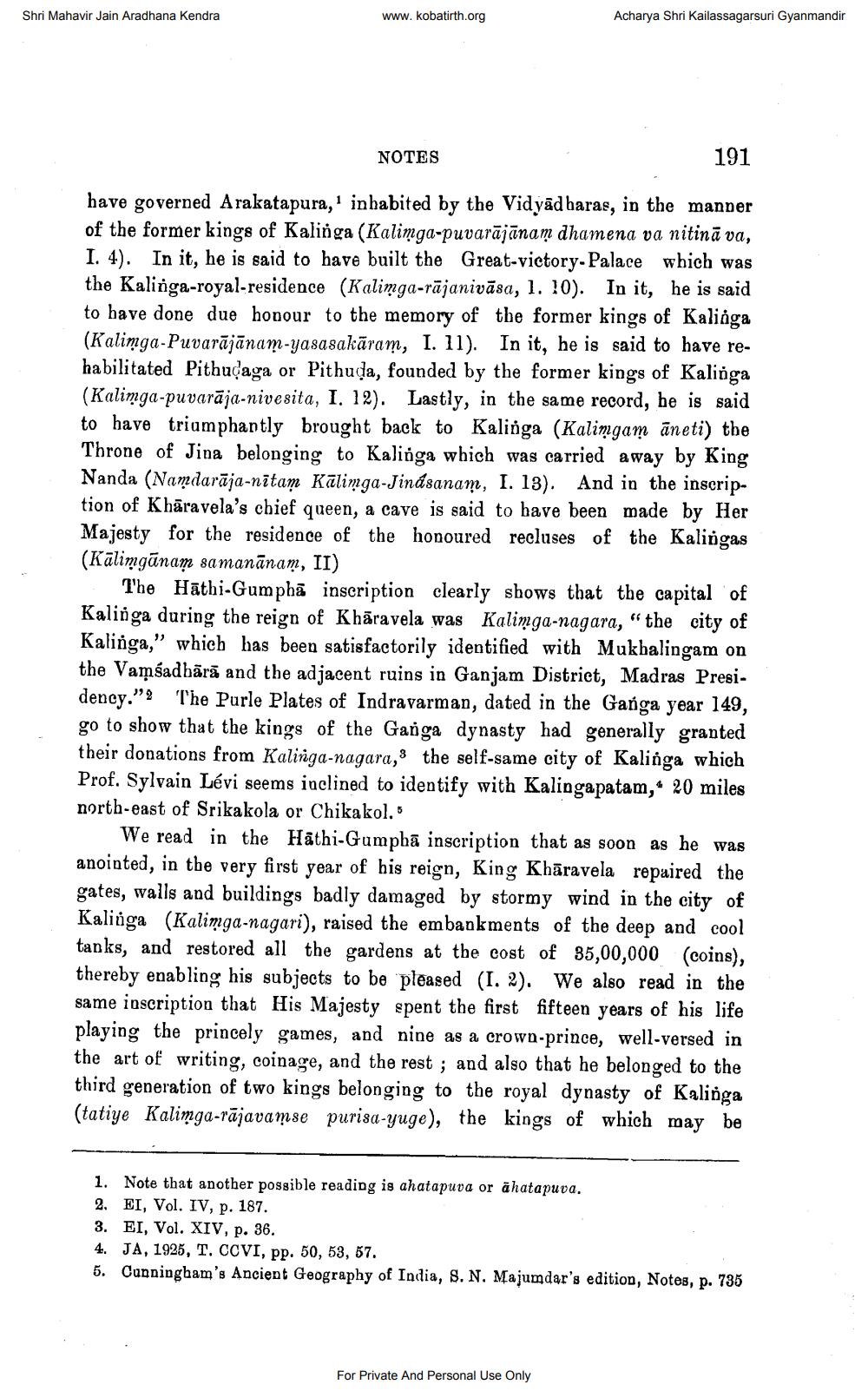________________
Shri Mahavir Jain Aradhana Kendra
www.kobatirth.org
Acharya Shri Kailassagarsuri Gyanmandir
NOTES
191
have governed Arakatapura,' inhabited by the Vidyād baras, in the manner of the former kings of Kalinga (Kalimga-puvarājānam dhamena va nitinā va, I. 4). In it, he is said to have built the Great-victory-Palace which was the Kalinga-royal-residence (Kalimga-rājanivāsa, 1. 10). In it, he is said to have done due honour to the memory of the former kings of Kaliaga (Kalimga-Puvarājānam-yasasakāram, I. 11). In it, he is said to have rehabilitated Pithudaga or Pithuda, founded by the former kings of Kalirga (Kalimga-puvarāja-nivesita, I. 12). Lastly, in the same record, he is said to have triamphantly brought back to Kalinga (Kalimgam āneti) the Throne of Jina belonging to Kalinga which was carried away by King Nanda (Namdarāja-nītam Kalimga-Jinásanam, I. 13). And in the inscription of Khāravela's chief queen, a cave is said to have been made by Her Majesty for the residence of the honoured recluses of the Kalingas (Kalimgānam samanānam, II)
The Hathi-Gumphā inscription clearly shows that the capital of Kalinga during the reign of Khāravela was Kalimga-nagara, " the city of Kalinga," which has been satisfactorily identified with Mukbalingam on the Vamsadbārā and the adjacent ruins in Ganjam District, Madras Presidency." The Purle Plates of Indravarman, dated in the Ganga year 149, go to show that the kings of the Ganga dynasty had generally granted their donations from Kalinga-nagara, 8 the self-same city of Kalinga which Prof. Sylvain Lévi seems inclined to identify with Kalinga patam,* 20 miles north-east of Srikakola or Chikakol.
We read in the Hathi-Gumphā inscription that as soon as he was anointed, in the very first year of his reign, King Khāravela repaired the gates, walls and buildings badly damaged by stormy wind in the city of Kaliiga (Kalimga-nagari), raised the embankments of the deep and cool tanks, and restored all the gardens at the cost of 35,00,000 (coins), thereby enabling his subjects to be pleased (1.2). We also read in the same inscription that His Majesty spent the first fifteen years of his life playing the princely games, and nine as a crown-prince, well-versed in the art of writing, coinage, and the rest ; and also that he belonged to the third generation of two kings belonging to the royal dynasty of Kalinga (tatiye Kalimga-rājavamse purisa-yuge), the kings of which may be
1. Note that another possible reading is ahatapuva or āhatapuva. 2. EI, Vol. IV, p. 187. 3. EI, Vol. XIV, p. 36. 4. JA, 1925, T. CCVI, pp. 50, 53, 57. 5. Cunningham's Ancient Geography of India, S. N. Majumdar's edition, Notes, p. 735
For Private And Personal Use Only




